By Robert Tate, Award-Winning Automotive Historian and Researcher
Images Courtesy of Stellantis Chrysler Archives
Published 9.10.2025
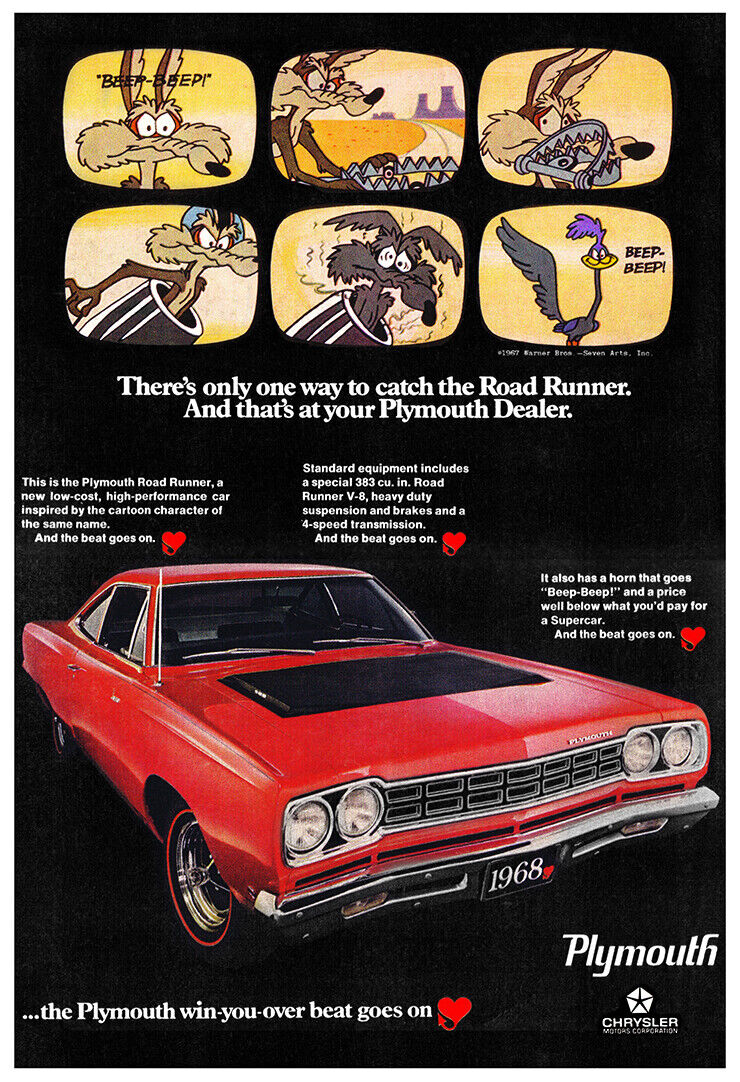 A 1968 Plymouth Road Runner ad (Stellantis North America Archives)
A 1968 Plymouth Road Runner ad (Stellantis North America Archives)
One of the most influential automotive advertising campaigns from the 1960s and 1970s was introduced by the Chrysler Corporation. For many years, auto enthusiasts have spoken about or collected Chrysler muscle car advertising material.
1960s and 1970s culture had a great influence on the young people of that era. There was both wonderful music along and great-looking automotive designs. The cars were fast and offered psychedelic colors.
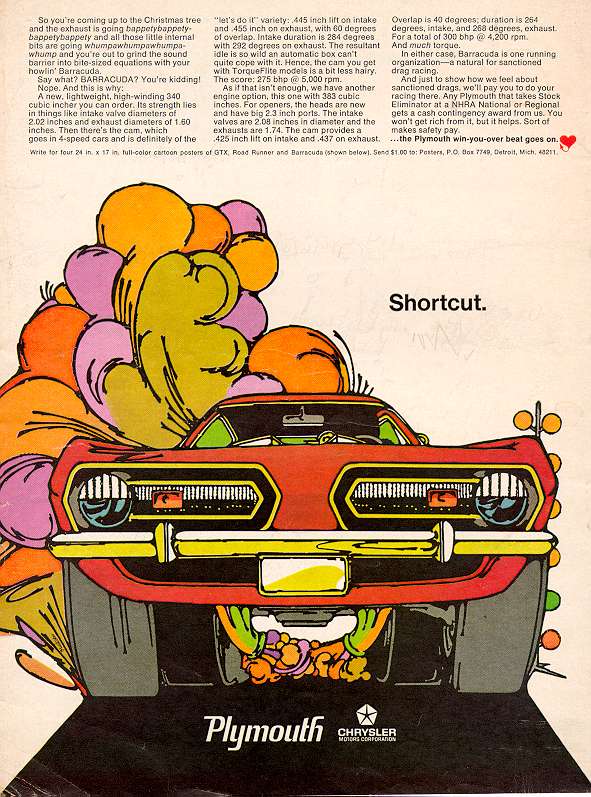 A 1968 Plymouth Barracuda ad (Stellantis North America Archives)
A 1968 Plymouth Barracuda ad (Stellantis North America Archives)
In addition, the early 1960s was the dawn of the muscle car craze. The Plymouth Road-Runner, taken from the Warner Brothers fast cartoon bird with a “Beep-Beep” voice, became an American muscle car icon. The famous cartoon bird that inspired the car’s horn became a great success among younger drivers.
The two men who spearheaded the relationship between Plymouth and the Road-Runner cartoon bird were Gordon Cherry, who came up with the idea of using the Warner Brothers character for the car, and Jack Smith, who secured the rights to use the character from Warner Brothers for $50,000. Another $10,000 was invested to create the iconic car horn that goes “Beep Beep.”
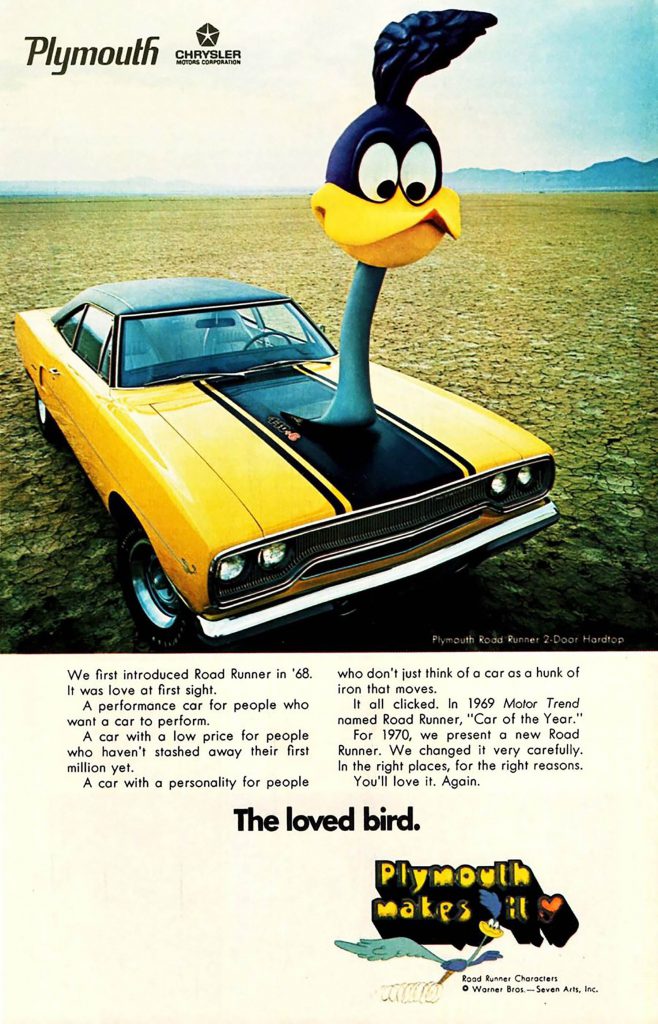 A 1970 Plymouth Road Runner ad (Stellantis North America Archives)
A 1970 Plymouth Road Runner ad (Stellantis North America Archives)
One Chrysler advertising theme from the 1960s was “Plymouth Tells It Like It Is,” which became popular with the younger demographic. Most of Chrysler’s advertising was also very bright and colorful.
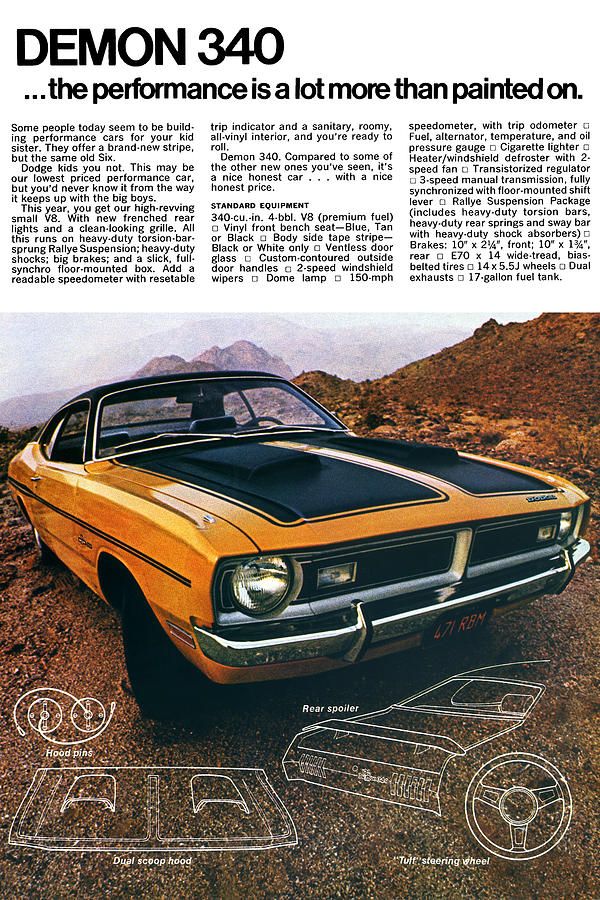 A Dodge Demon ad (Stellantis North America Archives)
A Dodge Demon ad (Stellantis North America Archives)
In 1968, Dodge introduced a showstopping Charger design that also became popular with young drivers. Dodge also introduced a “Dodge Scat Pack” series of promotional materials. In 1969, various Scat Pack decals and bumper stickers featured a bumblebee mascot. The 1968 Dodge Coronet used the advertising slogan “Rumble Bee” and was also part of the Scat Pack campaign. Some automotive enthusiasts dubbed the Dodge models the cars with the bumblebee stripes.
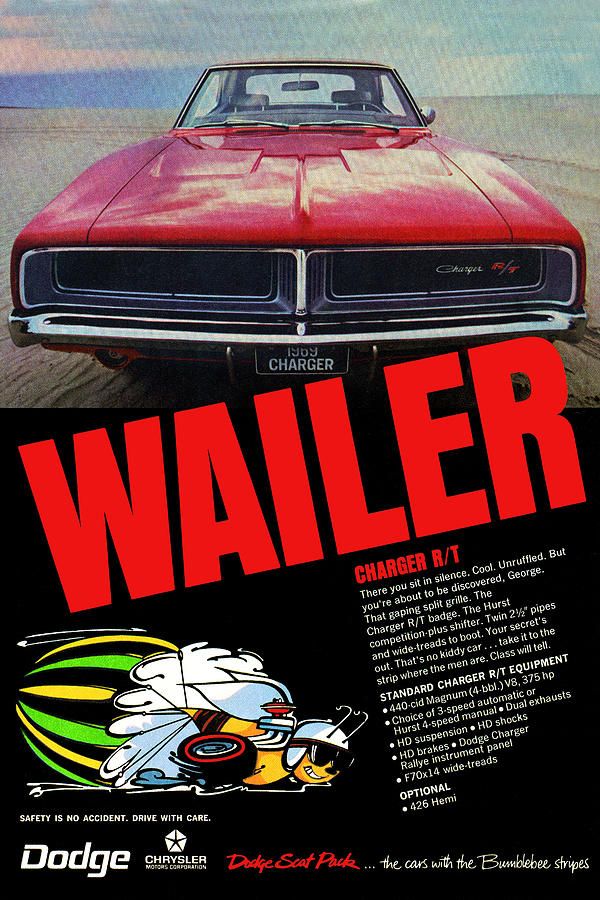 A 1969 Dodge Charger ad (Stellantis North America Archives)
A 1969 Dodge Charger ad (Stellantis North America Archives)
In 1970, Plymouth offered a Road-Runner bird mounted on the hood for the muscle car’s fans, calling it the “The Loved Bird.” Then, in 1971, Dodge introduced the Dodge Demon with an accompanying little red devil cartoon advertising campaign.
I remember during the early 1970s when the Dodge Demon model’s advertising created some mild controversy, as some religious groups protested the inclusion of the little red devil in the campaign. The Demon logo appeared on the 1971 models.
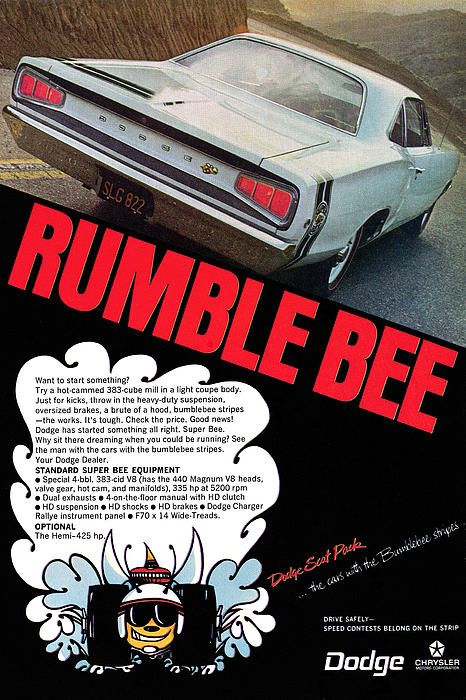 A 1968 Dodge Coronet ad (Stellantis North America Archives)
A 1968 Dodge Coronet ad (Stellantis North America Archives)
Another iconic muscle car Chrysler introduced in 1970 was the Dodge Challenger, which sold for $3,266. Its advertising featured a great-looking Challenger with a magnum V8 engine and a popular purple color that was referred to as Plum Crazy. In 1970, Dodge also introduced a mid-year release of the Challenger R/T with a 340 cubic inch Six Pak engine which attracted many young drivers.
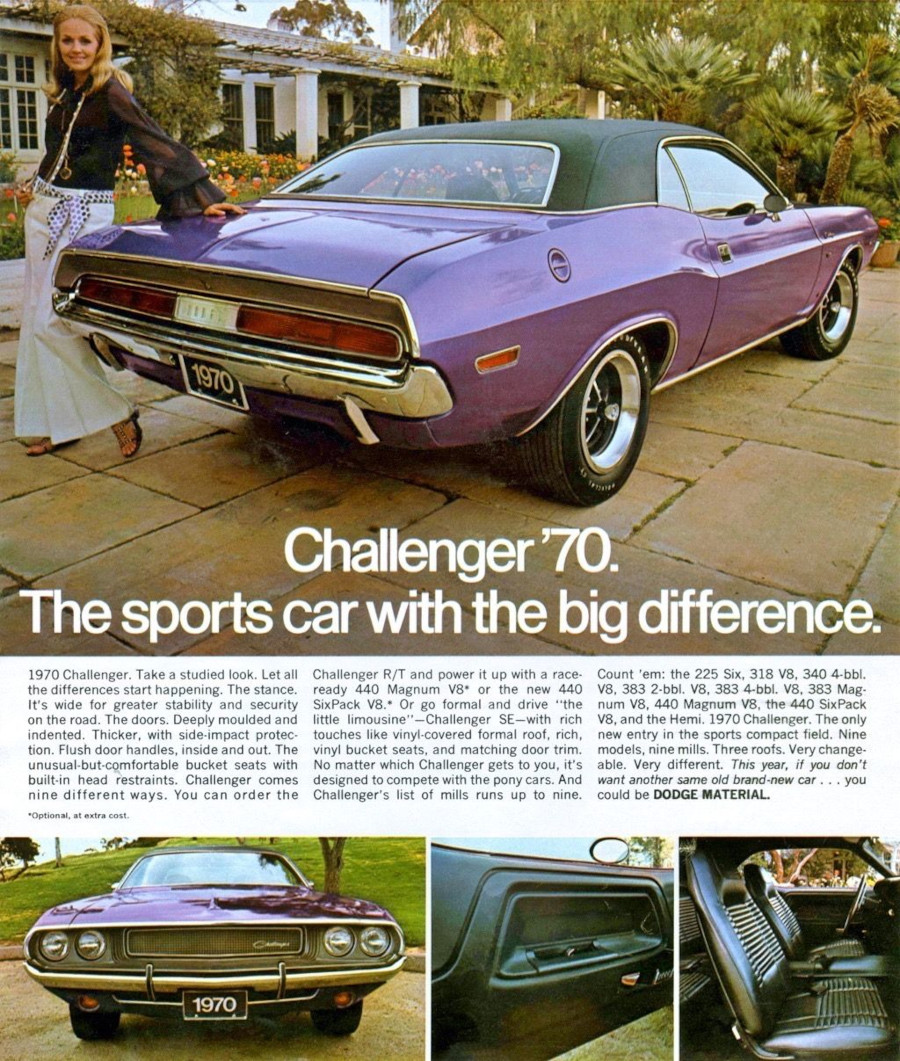 A 1970 Dodge Challenger ad (Stellantis North America Archives)
A 1970 Dodge Challenger ad (Stellantis North America Archives)
Some of the most iconic Mopar performance models were the winged cars, like the Plymouth Road Runner Superbird. Another popular car not pictured was the 1970 Plymouth Cuda in Lime Green.
There was so much great news about the new 1970 Scat Pack models that Dodge placed an eight-page advertising insert in magazines like Car Life in 1969. Other popular magazines that featured Chrysler muscle car advertising included Hot Rod, Motor Trend, and Car and Driver.
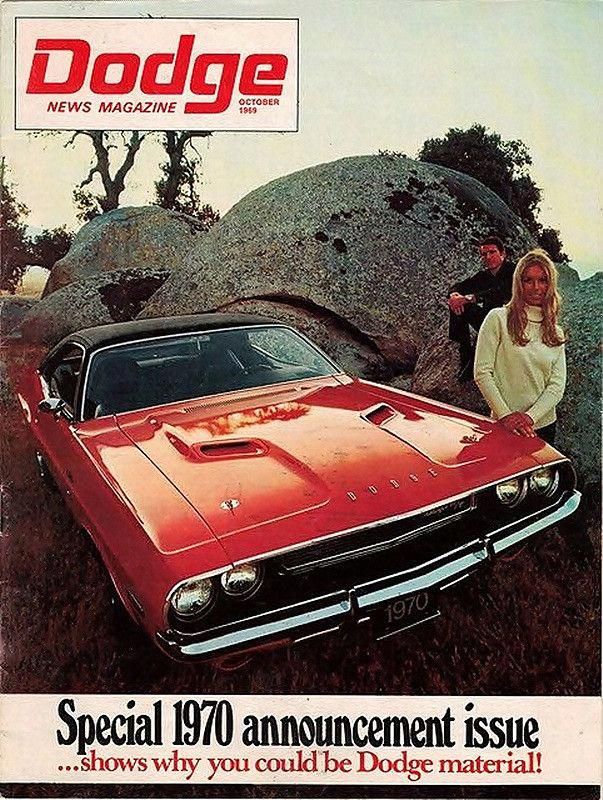 The 1970 Dodge Magazine with a Challenger announcement (Stellantis North America Archives)
The 1970 Dodge Magazine with a Challenger announcement (Stellantis North America Archives)
In conclusion, during the 1960s and early 1970s, Chrysler made automotive history, introducing high-performance cars that Americans loved and still remember today. These Chrysler advertisements reflected cultural trends and will always be a part of our automotive history.
Bibliography
Holder, Bill & Kunz, Phil. “Chrysler Muscle: Detroit’s Mightiest Machines.” Krause Publications, 2003.
Frumkin, MJ. “Classic Muscle Car Advertising: The Art of Selling Horsepower.” Krause Publications, 2002.
McPherson, Thomas A. “The Dodge Story.” Motorbooks International, Crestline Publishing, 1975.


